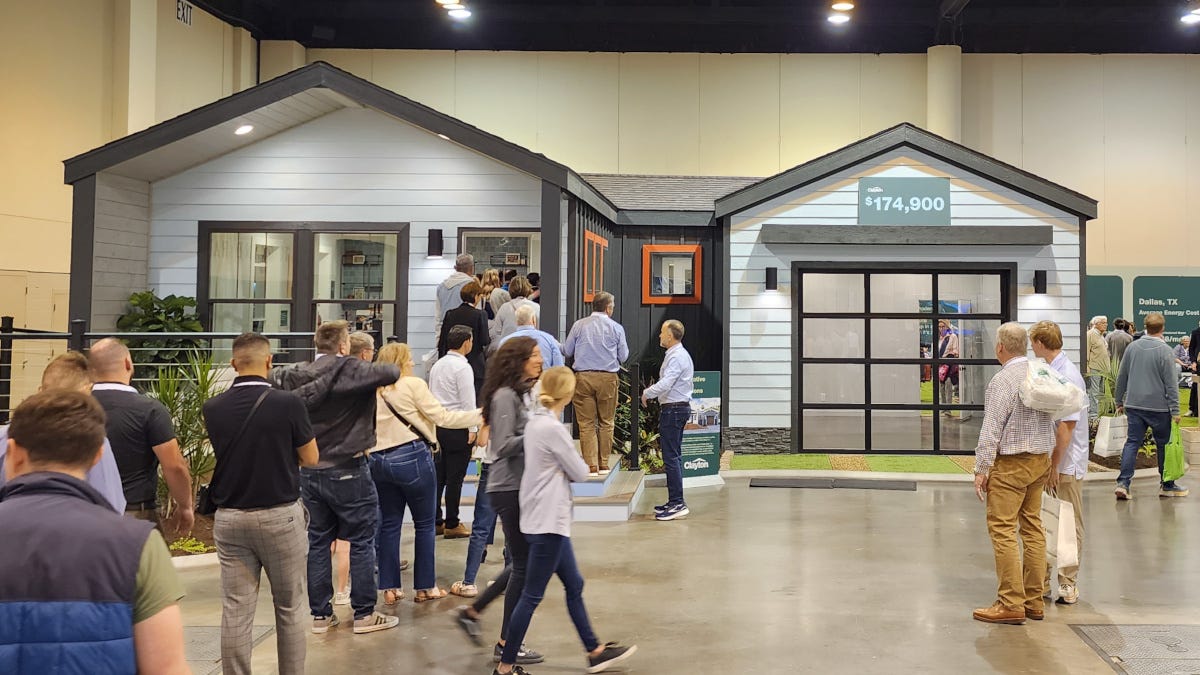Neighborhoods are built with people
On rent ceilings, RV living, and why the look of reconstructed homes should be a far-distant secondary concern behind getting people "home" after a disaster
Almost 9,000 homes were destroyed by the fires around Los Angeles -- that's the early estimate being used by reinsurance brokerage Gallagher Re. For perspective, the US builds about 1.4 to 1.5 million new homes a year. But that's a national figure. In California alone, new single-family housing starts run about 8,000 to 9,000 per month.
■ In other words, the Los Angeles-area fires aren't just substantial in their scale and impact, replacing them is going to materially affect the construction rate for the largest state in the union. It's extremely unfortunate, but the event is going to present a dramatic set of natural experiments for economists.
■ For one, the differences between the post-disaster rules imposed on rental versus owner-occupied housing will have significant consequences. Price limits in the name of "gouging prohibitions" will only affect rental housing: Nobody can tell you not to price your house for sale for an exorbitant amount. Indeed, nobody can force you to sell your home at all (aside from exceptional circumstances involving public domain).
■ For another, the process of local regulatory approval is going to discourage innovations. Local authorities have already said they want to see like-for-like replacements, via statements like, "if you got a mid-century modern, we want to see that mid-century modern come back". The mayor's executive order includes "Clear the way to rebuild homes as they were" as an express bullet point.
■ It's understandable why regulators would prefer like-for-like replacements; the less change, the easier to review. But the mayor's executive order says that for expedited review policies to apply, "The structure or facility to be repaired, restored, demolished, or replaced does not exceed 110% of the floor area, height, and bulk of the structures or facility existing immediately prior to the Wildfires" and says, "the project cannot result in a change of use from [...] a less intensive use to a more intensive use, or an increase in density or units (including accessory dwelling units)".
■ The problem for residents is that they need as much square footage to be built as quickly as possible: It's not hard to imagine neighbors helping neighbors by offering them temporary space in a freshly-built accessory dwelling unit (ADU), like a granny flat or a prefabricated tiny home, while more neighborhood homes are reconstructed. Most people probably want to get back into their original neighborhoods as quickly as possible, and living temporarily in a neighbor's back yard studio probably beats having to live for a longer time in an RV.
■ Likewise, manufactured and modular housing doesn't fit neatly within a regulatory model that favors like-for-like reconstruction, but it could provide a significant way to expedite the reconstruction process and get people home faster than waiting for site-built assembly. Manufactured housing is wildly under-appreciated in America today, and that under-appreciation has stifled much-needed innovations. Helpfully, California's recent statewide liberalization of ADU rules has done much to boost the market.
■ Regulators and city officials too often assume that what matters most in a community is the superficial stuff: Architectural styles, paint colors, and the like. That's a mistake. The lesson of New Orleans after Hurricane Katrina is that people want to get home, but if there are too many obstacles, they'll be forced to make their homes elsewhere. Neighborhoods are made of people, not just the buildings where they live. If the fire-devastated communities around Los Angeles are to recover, what matters most is getting the people back as soon as possible. How the homes look should be a far-distant lesser consideration.



